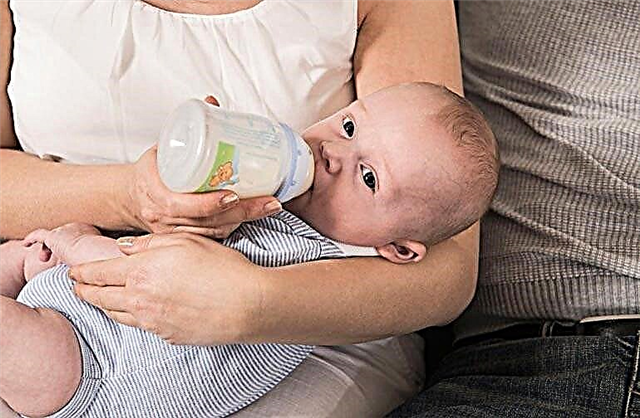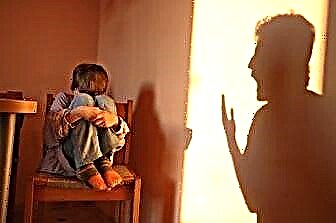
Back pain is usually more common in adults. But in no case should you ignore their appearance in children. If a child complains of back pain, this is a signal for the parents to take action. What can cause pain and what to do with it, we will tell in this article.

Causes
A child's back always hurts for some reason. There is no causeless pain in this part of the body. All reasons can be roughly divided into several groups. Back pain can be caused by injury and this is a fairly common situation. Pain can be a symptom of disorders in the spine - scoliosis, kyphosis, lordosis.
The next group of reasons concerns the complications of viral diseases. Often influenza, ARVI, and some other infectious diseases cause rheumatism. Back pain can be associated with diseases that are not related to the musculoskeletal system, such as certain kidney diseases in which the lower back hurts.
You cannot ignore the baby's complaints of back pain. The listed groups of reasons can pose a serious danger to the life and health of the child. The sooner the cause of the pain is found, the more likely the child can be effectively helped.

Let's take a look at some of the most common causes of pain. This information is provided as a reference, it cannot be used for self-diagnosis, only a doctor can establish an accurate diagnosis.
Improper distribution of back load
This is a fairly common reason, which gradually leads to the fact that the child complains of aching back pain. The load on the back muscles is unevenly distributed in children who wear an uncomfortable knapsack, overload it with textbooks, as well as children who study and study in an improperly organized workplace - with insufficient lighting, a low or excessively high chair or table.
The vertical load is incorrectly distributed in case of improper posture, prolonged sitting. Therefore, children who prefer computer games to all the entertainment in the world are much more likely than others to complain of back pain.
Children who sleep on a soft mattress with a large pillow also suffer from pain. In a dream, the baby's body "falls through", the physiological curves of the spinal column take the wrong position.
Constant tension of the back muscles leads to impaired blood circulation in them, which is manifested by pain. The child may complain of pain usually in the afternoon, pain can be observed in the area of the shoulder blades, in the lumbar region.


Correcting the situation is quite simple. The action plan is as follows:
- show the child to a pediatric orthopedist to find out if the disturbance in load distribution has caused scoliosis and other changes in the spine;
- buy your child the simplest reclinator - "eight", so that he can maintain posture;
- organize the workplace correctly - think over the lighting, the height of the furniture;
- change your child's backpack or bag for an orthopedic knapsack or backpack with rigid orthopedic tabs and make sure that the backpack is not too heavy;
- change the mattress on the child's bed to a hard orthopedic one, replace the large pillow with a small and dense one, or teach the child to sleep without a pillow;
- limit the time spent by the child at the computer, forbid reading while lying down.


Trauma
Children often fall, jump, run, and therefore complaints of back pain can appear after jumping on a trampoline, after falling from a bicycle or from a swing, even after physical education, if the exercises were associated with jumping or sharp turns of the body.
You can suspect an injury in a child by the nature of the pain. If in the first case it is aching and muffled, then when the spine is injured, it has a sharp, strong character, often accompanied by "lumbago". On the spine, when a separate vertebra is injured, you can see a slight swelling, touching which will be quite painful for a son or daughter. In some cases, vertebral fractures are asymptomatic and pain increases gradually.
Spinal injuries can be accompanied by headache, nausea, loss of consciousness, and impaired coordination of movements. You cannot wait in this case. If a child complains of back pain after physical activity, jumping, visiting attractions, falling, you should act immediately. The action plan is as follows:
- lay the child on his back, fix him as much as possible, immobilize him;
- call an ambulance and wait for doctors;
- with severe pain, you can give the child pain reliever, but not in pills, since the swallowing reflex may be impaired; it is better to make an intramuscular angle in the upper part of the thigh in front.


To establish the nature and extent of the injury, if any, it is imperative to consult a traumatologist, surgeon or vertebrologist. An ambulance will carefully deliver the child to the hospital, where the appropriate specialists will find the cause of the pain and begin appropriate treatment.

The child does not necessarily have a fracture. Bruises and sprains are not excluded, but the parents' first response measures should be exactly as described above, so as not to harm the baby in the event of a fracture.
Inflammatory diseases
Quite often, muscle pain in the back is manifested as a consequence of a sore throat or flu. Rheumatic pains usually occur after an acute period of the disease, when the body temperature returns to normal. By itself, rheumatism may be accompanied by a new round of temperature rise.
The pains are acute, painful. It is quite simple to distinguish them from injury - before the onset of pain there was no physical activity, falls and jumps. Often the area of the shoulder blades, the cervical region hurts.
Often, myositis develops - muscle inflammation as a result of a previous illness or hypothermia, for example, after being in a draft or a long swim in a cold pond.

The procedure should be as follows:
- the child should be at rest;
- provide him with dry heat;
- call a pediatrician;
- start using local remedies - ointments and gels, which the doctor will prescribe;
- after the acute period is over, you can do physical therapy, massage and gymnastics.

Pathology of the musculoskeletal system
A child begins to complain of back pain if scoliosis develops in full swing. The curvature of the spine at the initial stage may not manifest itself in any way, however, a moment always comes when the tense muscles can no longer painlessly hold the curved vertebrae, trying to compensate for the distribution of the load.
Most often, children of early school age, as well as adolescents from 10 to 16 years old, face such pain. Painful attacks are repeated at an enviable frequency. It has different intensity, it increases, then decreases. The back hurts especially badly after a long walk, after physical education or having to sit for a long time (for example, in class).
Other symptoms include increased fatigue, headaches, visual displacement of the shoulder blades relative to each other in height, different shoulder heights, hunched over and drooping shoulders.


If there was no flu, tonsillitis, the child did not fall or hit his back, then the likelihood of developing scoliosis should be considered in order.
The action plan for parents looks like this:
- visit an orthopedic surgeon or traumatologist with your child. If the hospital has a vertebrologist, you can visit him too;
- take X-rays of the back, feet (to exclude flat feet as a cause of back pain);
- start treatment according to the regimen prescribed by the doctor - wear a corset or posture corrector, visit the exercise therapy room, the physiotherapy room, give the child a massage;
- for sleeping, you should choose a hard surface - hard "shields", which can be bought in any orthopedic salon;
- follow the correct organization of the workplace, choose the right backpack with wide shoulder straps and an orthopedic back;
- limit the time you watch TV and play games on the computer;
- send the child to the swimming section - this particular sport will help strengthen the back and quickly achieve a lasting therapeutic effect.
Other reasons
Among other reasons that may well cause discomfort in the back of a child, the following can be noted:
- kidney disease (the lumbar region of the back hurts, among the additional symptoms are urinary disorders, pain during urination, discoloration and amount of urine);
- tuberculosis (any part of the back can hurt, in addition, there is a general deterioration in well-being, prolonged fever that cannot be reduced by drugs, individual disorders of the respiratory system);
- blood diseases (leukemia or sickle-shaped anemia may well cause quite noticeable muscle pain in the back, additionally there is pallor of the skin, dizziness, attacks of loss of consciousness, headaches, appetite disorders, delayed development);
- tumors, cysts (the presence of any neoplasm may be accompanied by the appearance of back pain, there may be no additional symptoms).
If the orthopedist and traumatologist do not find any signs of injuries, posture disorders, spine, or back muscles in the child, be sure to contact the pediatrician to get referrals for blood and urine tests. Visit your nephrologist, pediatric oncologist, and hematologist if your lab tests are abnormal.


Remember that there is always a cause for back pain.
Doctor Komarovsky will tell you about a healthy back in a child in the next video.



